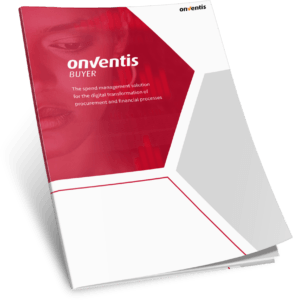The Importance of an Effective Procurement Strategy in the Business World
Procurement strategy is a central component of the modern business environment. It is not only a tool for reducing costs but also an instrument for increasing competitiveness and ensuring the company’s long-term success. An effective procurement strategy is crucial for buyers to achieve their organization’s goals.

The Importance of an Effective Procurement Strategy in the Business World
Procurement strategy is a central component of the modern business environment. It is not only a tool for reducing costs but also an instrument for increasing competitiveness and ensuring the company’s long-term success. An effective procurement strategy is crucial for buyers to achieve their organization’s goals. It indicates which measures need to be taken and what approach is planned. Companies that strategically align and implement their procurement activities can pursue various objectives that contribute to operational success. As part of a successful business model, the procurement strategy adapts to the company’s goals – and achieves their implementation accordingly.
What is a Procurement Strategy?
A procurement strategy is a structured plan developed by companies to organize, optimize, and control the procurement of goods and services. It serves to match the company’s needs with the best available resources to improve efficiency, quality, and competitiveness. Both short-term and long-term objectives are considered.
The following questions serve as a guideline:
- How much should be purchased? How much is needed now and in the future?
- Which suppliers will be chosen?
- What prices are accepted?
- How can we optimize cooperation with suppliers?
A procurement strategy, therefore, comprises the development of goals and measures based on the achievement of these goals. It defines all the important decisions that purchasing teams must make regarding procurement. The aim is to make the purchasing process effective, optimized, and adapted to the given objectives.
How to Develop a Suitable Procurement Strategy
Every strategy should be adapted to the company – it is very individual and corresponds to the values and guidelines of the company itself. It should be designed for the long term in order to gain a competitive advantage and remain relevant in the market. This makes it all the more important to develop the right strategy for the company and its purchasing organization. Which steps are necessary here?
- Determine the company’s status quo: The first step is to analyze the current procurement process thoroughly. Companies should not only carefully examine their expenditure but also identify their purchasing patterns and weak points. This provides the basis for eliminating weak points and exploiting potential. Analysis enables companies to identify specific challenges in procurement and develop solutions.
- Define objectives: The objectives set for the procurement strategy should be in line with the overall business objectives. These targets can be diverse, including cost reduction, strengthening supplier relationships, risk mitigation or sustainability initiatives. The clear definition of objectives is crucial as it paves the way for the development of appropriate measures.
- Define KPIs: To monitor the success of the procurement strategy, measurable KPIs need to be set. These KPIs should be specific, measurable, achievable, realistic, and time-bound (SMART) to ensure that the strategy is scalable and progress can be tracked.
- Integrate the right tools at an early stage: Integrating digital solutions is an imperative step. Companies should determine which digital tools and technologies can support the implementation of their goals. It is also essential to make the best use of existing digital resources and check whether there are complementary tools that can support additional objectives.
- Develop measures: The defined strategy requires concrete steps for implementation. This includes the definition of measures and methods based on the previous steps. Digital procurement solutions such as source-to-pay can play a crucial role at this stage, as they facilitate the implementation and management of the measures.
- Continuously review and improve: Once measures have been taken, ongoing review and adjustments are crucial. Companies should regularly monitor progress, measure impact, and adjust as necessary to ensure that objectives are met effectively.
What Role do Objectives Play in the Procurement Strategy?
A procurement strategy drives the company forward and acts as a guiding principle. Defining a suitable roadmap is necessary to consider the objectives set carefully. Depending on the desired goals, the strategy can offer various benefits for the company. What concrete results can it realize in a corporate context? Here are the key objectives that can be realized through a suitable procurement strategy:
- Cost control: By carefully planning and aligning procurement activities, companies can reduce their expenditure and use resources more efficiently. This includes the selection of first-class suppliers, negotiating volume discounts, and overall cost optimization in the procurement process.
- Efficient supplier management: Choosing suitable suppliers is crucial to the company’s success. A well-thought-out strategy helps to identify and select reliable suppliers who can offer high-quality products or services at competitive prices.
- Risk management: Successful procurement strategies consider potential risks such as supply chain disruptions, geopolitical uncertainties, currency fluctuations, and other external influences. The development of risk mitigation strategies strengthens companies’ resilience to unforeseen events.
- Increasing efficiency: A clear focus on the procurement strategy helps to optimize activities and increase efficiency by identifying weak points in procurement processes. This can be achieved by implementing technologies such as e-procurement, automated workflows, and other digital solutions.
- Compliance: In many industries and countries, there are specific regulations and compliance requirements concerning procurement. A well-defined strategy ensures compliance with these legal requirements to avoid legal problems and facilitate smoother and less intricate adherence.
- Sustainability: Companies are placing increasing emphasis on sustainable practices. If the procurement strategy is designed for sustainability, the company is supported in identifying suppliers that pursue environmentally friendly and socially responsible practices. It thus contributes to the realization of a company’s sustainability goals.
Effective Tools for Implementing Your Procurement Strategy
A source-to-pay suite is ideal for defining suitable measures for optimizing the procurement process and realizing the aforementioned goals. It offers the opportunity to digitalize the entire procurement process and examine it in a data-driven manner. All the necessary data is available digitally, which helps to define the strategy. S2P software offers comprehensive data analysis; companies can analyze current purchasing patterns, identify weak points, and derive insights that can be incorporated into the procurement strategy. The software makes it possible to define KPIs and measure the success of the measures. A S2P suite supports the definition of procurement targets and makes it possible to develop a strategy in a simple and data-driven way.
But e-procurement solutions are also valuable when implementing the strategy: S2P software automates and optimizes the entire procurement process, from identifying requirements to payment and spend analysis. Companies save time, resources, and nerves by reducing manual work steps while accelerating and simplifying the process. Depending on the goals set, an S2P solution plays a role in achieving them. If the aim is to reduce costs, the automation of invoice processing will effectively help to achieve this goal. However, suppose a company wants to strengthen its supplier relationships. In that case, supplier relationship management can improve cooperation with suppliers and achieve cost savings through improved relationships. S2P is, therefore, a versatile tool that significantly helps in the development of the strategy and its implementation.
We have compiled a list to help you find the right S2P solution for your company. Click here for our guide!
Weitere BlogsMore BlogsMeer blogs




